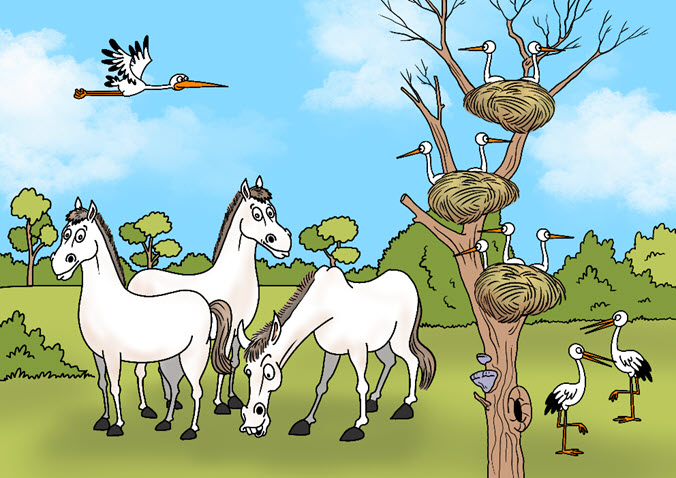Every year at the end of March, the white storks return to their breeding grounds in central and eastern Europe after having spent the winter in Africa. They take the eastern route via western Asia and Turkey. More than forty stork pairs have chosen the old oak trees in the protected wetlands near Marchegg as their exclusive living and mating quarters. The nesting habits are unique by European standards. Normally, white storks build their nests on chimneys and roofs. However, the natural location at the edge of the wetlands has unbeatable advantages: the waters can be easily surveyed for the purpose of catching fish and frogs, while the marshy meadows are ideal for picking up worms and insects. The storks also cooperate with the Konik breed of horses: in those areas where the horses have chewed the grass down to a nearly clean surface, the storks come in and can more easily find food. Due to ampleprovisions and good care after hatching, the young storks are set to take theirearliest flights in May. At the end of August, they embark on their first trip to Africa with their parents, taking the eastern route, as is usual for three-quarters of all white storks. The stork families of Western Europe navigate a flight pattern over Gibraltar. Both of these migration routes have been used for centuries. The political division of Europe into East and West has never concerned the white storks.


